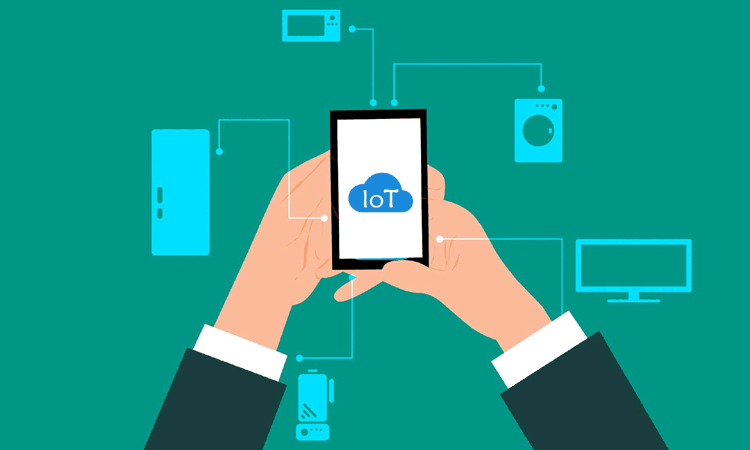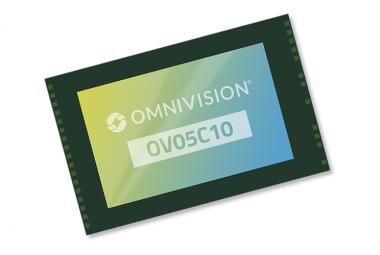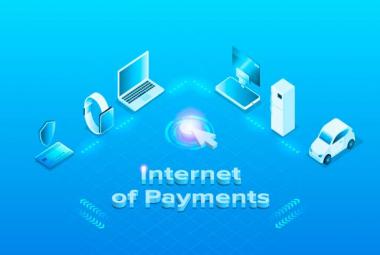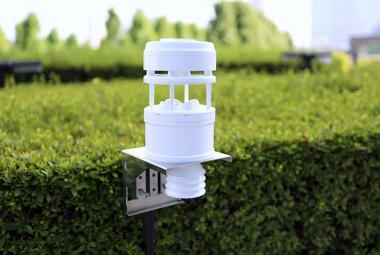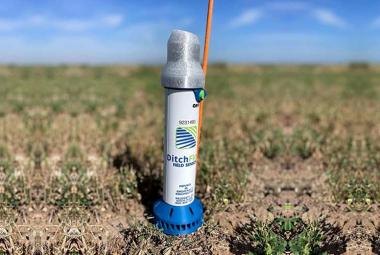IoT is now spreading everywhere, no matter it’s a big factory or just an individual’s home. Everyone is upgrading to IoT for making their lives easy and comfortable. With the use of IoT one can control their appliances remotely from anywhere throughout the world or can monitor data output of different sensors, not only individuals but big companies also prefer to use IoT for monitoring the live production and sales of different branches remotely. But, the main point to which I want to draw your attention is sensors, if you want to monitor anything you will definitely need a sensor and every sensor has a different task to do.
For example: - In huge companies where there are lots of machineries and other big electrical mechanisms, it becomes a vital task to monitor and control the temperature of every single machine present there. For this purpose companies use temperature sensors linked with IoT which continuously monitors the temperature and if it crosses the set limit then it either notifies the staffs or cuts off the power for that particular appliance.
From the above example I just wanted to show that sensors are useful for everything without sensors you can’t monitor any physical property. Hence, it becomes quite useful to have the knowledge of some important sensors that are being used with IoT the most, and also you should be familiar with the basic task, function and behaviour of those sensors, in this article we will be telling you the “Top 10 IoT sensors”.
1. Temperature sensors
The very first sensor that is being used in combination with IoT from very long time is “Temperature sensor”. A temperature sensor as the name suggests gives the numerical reading of the temperature of its surroundings and we can use those readings for different tasks, usually persons use these sensors for keeping an eye on the level of warmness in their house, and companies use these for maintaining a constant and appropriate temperature to different machineries by measuring the temperature of it. As some machines can be really sensitive to high temperature and high temperature can affect the working or life span of that machine, it becomes a very vital part to maintain the temperature.
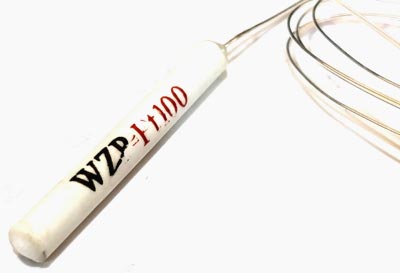
Talking about the “Types of temperature sensors” that are currently in use then there are four main kinds of temperature sensors, which includes:-
Thermistor
Thermistor is a combination of two different words “Thermal” and ”Resistor” which clearly means it has to deal with temperature and resistance. It actually does what its name suggests it varies its resistance according to the surrounding temperature, after that we can read the resistance directly by connecting it to the ADC pins of any microcontroller or we can also amplify the readings before reading it, this makes the reading much more accurate and precise. Its temperature reading can tolerate from -50°C to 250°C. These sensor types can read temperature with high speed and with great accuracy.
Thermistor is again sub divided into two types that are:-
- NTC thermistors: - NTC stands for Negative Temperature Co-efficient. These are the types whose resistance is inversely proportional to the temperature, with that I mean that in NTC type thermistors the resistance decreases with the increase in temperature and vice-versa.
- PTC thermistors: - PTC stands for Positive Temperature Co-efficient. These are the types whose resistance is directly proportional to the temperature, with that I mean that in PTC type thermistors the resistance increases with the increase in temperature and vice-versa.
Resistance temperature detectors
RTD thermometers also measure temperature according to the change in resistance but the difference is that it uses pure metals whose resistance changes in different temperature. Usually platinum is used as the pure metal for gaining highly accurate results but for low end uses copper and nickel can also be used.
It is highly accurate with a range of -200°C to 600°C
Thermocouple
It is the most used type of temperature sensor. It uses two different metal types as wires and the voltage change that occurs between these two points due to the change in temperature reflects the temperature.
It is not much accurate but has a very good of measuring from -200°C to 1700°C.
Semi-conductor based sensors
These sensors types are not used externally instead they are provided inside various Integrated Circuits and possess a very low accuracy and a range of -70°C to 150°C.
One great example for temperature sensor is LM35, it has quite a lot features to talk about. It’s cheap, accurate and easy to use with Arduino. It operates between 6 and 12v so can be easily connected to almost any common microcontroller, can easily be used with Arduino and many many more features too.
If you are confused with all the different kind of temperature sensor in the market, then you should definitely choose to go for LM35.
2. Humidity sensors
As we all had studied in our junior classes that humidity is the term used for defining the amount of water vapour present in the air. Let us know a bit deeper. Do you know? In industries humidity controlling is a major thing to do, as high humidity can lead to miss-working of various machines and also various problems with the workers. So humidity is controlled with a humidity controlling system. But as you might have guessed that for controlling humidity, we will have to sense the value of humidity, that’s where humidity sensors come into play. They are not only used in industries nut also in domestic, agriculture, medical, electronics and semi-conductors etc.
For measuring humidity there’s a well-known sensor named as DHT11, there are other versions available too like DHT22 and more. The sensor can not only measure humidity but also the temperature. It has a built-in capacitive type humidity sensor and a thermistor to measure humidity and temperature.
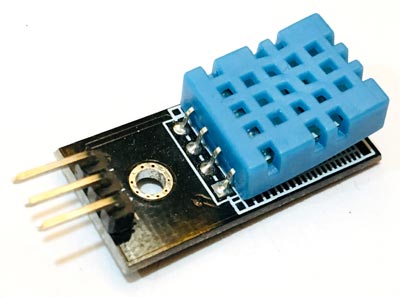
One more thing that attracts people towards it is the very low cost of this sensor and the simple way of using it. You just need to install respective library into programming environment and connect three mandatory pins that are VCC, GND and Output.
3. Gas sensors & Air quality sensor
Gases are something that can be really pleasant sometimes but sometimes it can also lead to death. In daily life of a common people there’s not that much fear of different gases but when it comes to industrial level, if an unwanted gas leaks by mistake it can lead to massive destruction if not got detected in time. Hence, it is quite important for companies to sense different kinds of gases around their factories and keep treating them regularly. Gas sensors or Gas detectors are being used to keep track of harmful gases from many times and they always serve their job properly. A gas sensor is a device that can sense presence of a specific type of gas in its surrounding. It is generally used for safety purposes like when the gas is detected the microcontroller will automatically break the on-going works and will notify staffs about the threat.
There are many types of gas sensors available in the market now-a-days, but the most common series that is used by various hobbyists and companies are of MQ series:-
These series consists of various different sensors for detecting different gases. Some of them are mentioned below with the name of gases they detect:-
-
MQ-2 - Methane, Butane, LPG, smoke
-
MQ-3 - Alcohol, Ethanol, smoke
-
MQ-4 - Methane, CNG Gas
-
MQ-5 - Natural gas, LPG
-
MQ-6 - LPG, butane gas
-
MQ-7 - Carbon Monoxide
-
MQ-8 - Hydrogen Gas
-
MQ-9 - Carbon Monoxide, flammable gasses
-
MQ131 - Ozone
-
MQ135 - Air Quality (CO, Ammonia, Benzene, Alcohol, smoke)
-
MQ136 - Hydrogen Sulphide gas
-
MQ137 - Ammonia
-
MQ138 - Benzene, Toluene, Alcohol, Acetone, Propane, Formaldehyde gas, Hydrogen
-
MQ214 - Methane, Natural gas
-
MQ216 - Natural gas, Coal gas
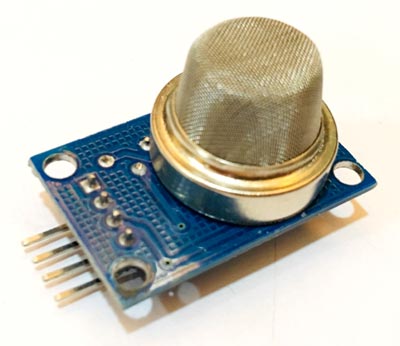
Air quality is a major issue of each and every developed place throughout the world and many countries are stepping towards maintain the air quality by various means and the sensor that is becoming popular for monitoring the quality of the air is obviously “Air quality sensor”. If you are getting confused between gas sensors and air quality sensors then just remember that a gas sensor can only sense a particular type of gas present in its surrounding but air quality sensors senses the overall quality of the air by measuring different factors like amount of CO2 and other harmful gases present in the air and also detecting the nitrogen level of a particular area they are placed in.
These sensors work by detecting the attenuation of wavelengths. As you might know that every gas present in our surrounding has a different attenuation and wave length. These sensor measure the amount of each gas present in the air around it and then after processing all the data, it tells whether the air is polluted or clean or what measures should we take to make the air around more better to breathe.
These sensors are getting used with IoT to measure the air quality of various cities from one single place and also to provide common people the accurate population rate of their surroundings.
4. Water quality sensor
Air and water are the two things that are most vital for the smooth going of life and continuous checking of water quality of a city is as important as checking air quality. That is why we can’t miss out the next sensor in the list that is “Water quality sensor” These are the sensors that provide the data of how clean and suitable is the water. It measures different values like pH value, dissolved oxygen, temperature level, conductivity, nutrients like phosphorus, nitrates and ammonia, turbidity and clarity etc. and on the basis of these values microcontrollers give the data of whether the water is pure or not and what type of external chemicals should be added in order to make the water more appropriate for aquatic animals or human consumption. These sensors come in various different types and sizes, they can be all types of necessary sensors merged in one as a standalone water quality sensor or there can be multiple sensors to measure different properties.
Talking about the accuracy of both two types then the one that uses all the sensors individually is considered more accurate as it processes the properties from different sensors but the mixed one processes all at once and gives the output.
5. Passive Infrared sensors
Security is a major concern in this modern and growing world not only industries are using motion detector to catch thieves but these things are also coming into use by various malls and small shops. The most common sensor that is being used for detecting humans are PIRs that stands for Passive InfraRed sensor. This sensor detects the InfraRed lights that are being emitted by any animal’s body as heat. These are called passive sensors because they don’t emit any type of radiations or energy in order to detect the motion instead it works entirely by detecting the radiation that is being emitted by the source (The source can be human being or any animal) in its field of view.
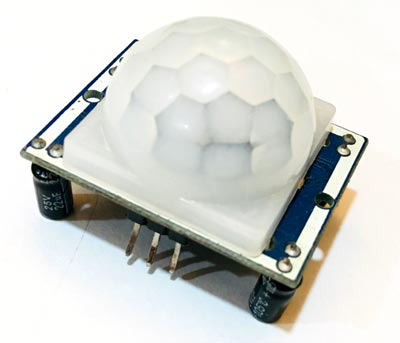
Now-a-days engineers are combining these sensors with IoT devices so that they can send their data over the internet and the owner can monitor if anyone enters in his area from a remote location too.
6. Cameras
Cameras, we all are familiar with them, our mobile phones have cameras, we have DSLRs they are camera, CCTVs in different shops are cameras and many more, I simply mean we all are familiar with cameras. But how can a camera be a sensor? As we know a sensor senses something and what camera is doing is it is capturing light and making images from them that means it is sensing something.
Now how is it getting used it with IoT? In various shops, schools, malls or even industries we can see CCTV cameras and many of them are connected to internet that means they are streaming live video to the internet continuously and with that a person can monitor every corner of a room with any of his device by simply getting connected to the server from which the camera is connected.
Not only this, camera is even being used for attendance purposes, through the help of image processing a face is loaded in cameras and whenever that similar face is detected it makes the attendance of that person and if the face isn’t detected throughout the entry period then it marks that person as absent, the database of the attendance can be connected to internet so that the boss can keep an eye to the presence of every employee in his company.
If we look for the most common microprocessor and microcontroller now-a-days then everyone knows that Raspberry pi and Arduino development boards come into play and why am telling this is because these days it isn’t much difficult to use cameras in your Arduino or Pi devices, it’s just a matter of a camera module that is supported in these boards. The most popular camera shield for Arduino is ArduCam OV2640 and for Raspberry Pi its PiCamera.
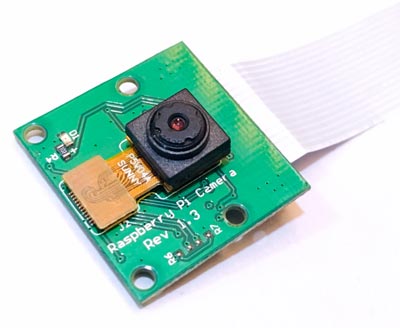
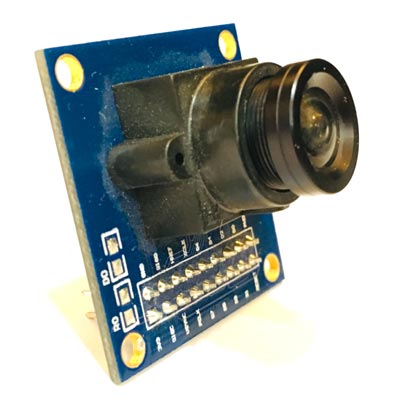
7. Proximity sensors
Proximity is the term used to define how close is an object to the sensing material and proximity sensors are used to calculate just that, it simply tells if something is present in its front or not. It seems like a small sensor with not much large use but if we dig a bit deeper into the applications of this particular sensor then you will surely understand the big importance of this small sensor type. In various industries where conveyer belts are used for transporting the products from one place to another these sensors are placed at various places to count the number of product after a period of time so that no product gets missed and the workers will also have an idea of how many products have passed. This was only one example of its uses, our phones also use proximity sensors to detect if our phone is close to our ear or in the pocket then it keeps the screen turned off hence it saves a bit of power and also prevents the screen from getting touched by mistake, in various places it is used to count the persons entering or exiting from a place or room and if we keep talking about its uses then it will seriously make this article boring to read and long.
So let us now come to its types and working:-
There are many types of proximity sensor like inductive, capacitive, magnetic, eddy current based, Doppler Effect based, ultrasonic, photoelectric etc.
But the most common two types that are being used by hobbyists and various industries too are ultrasonic and photoelectric so let us see what those two types of proximity sensor are.
- A photo-electric sensor works emitting and detecting infrared light rays there are mainly two components on them one is a IR LED that converts electrical signals into infrared rays and one is photocell that converts infrared rays into electrical signals. There are two ways in which they are used one is with the principal of reflection i.e. both the LED and cell are placed at the same place when there is any object in front of the sensor it reflects back the IR rays and photocell detects the rays and according to that it tells whether there is something in front of the sensor or not. In the other way the photocell is placed in front of the IR LED facing towards it so if any object comes in between those it blocks the rays coming to the photo cell an gets detected.
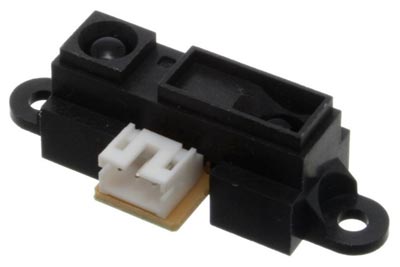
- Ultrasonic sensors also work on the principle of reflection but it emits and detects sound waves it also has two basic components that are transmitters and receivers, transmitters convert electrical signals into ultrasonic sound waves and receivers convert ultrasonic sound waves into electrical signals.
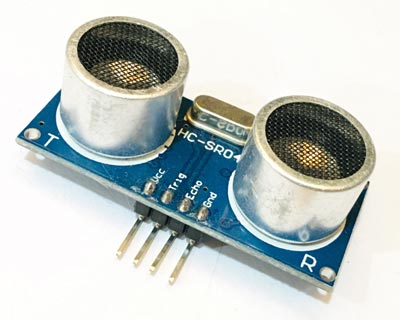
It is generally used for detecting the distance of an object as the speed of sound in room temperature is constant and the ultrasonic sensors gives out the time taken for the waves to come back to the receiver we can easily calculate the distance by the formula: Distance = {(speed of sound in medium) * (time taken)}/2.
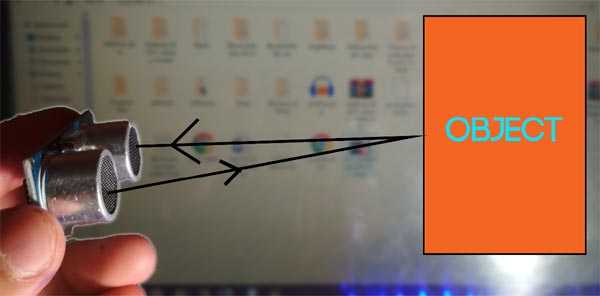
8. GPS sensors
GPS, we all are quite familiar with this word, it stands for Global Positioning System and is used by our smartphones, autonomous vehicles and many more modern gadgets. It is also one of the most used sensors with IoT. The function of this sensor is to locate you in the world it can either give you the longitudinal and latitudinal values that you can plot on a real map and can identify where you are in the map or can directly give its output on a GUI based map.
These sensors has a variety of applications as with the help of GPS we can track, navigate, locate and measure the speed of a moving object, it can be a very handy sensor type to work with and engineers are doing just that. Now-a-days we can buy GPS for cheap for keeping track on our children, elder persons, pets, cars, bicycles etc. along with that, it is being used the most in drones for giving them the functions like Return to Home (RTH) and position hold etc.
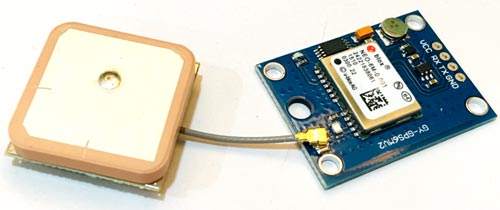
One more sensor that goes side by side with GPS sensors are GSM modules which lets you get send and receive calls and messages to the microcontroller. GSM originally meant Groupe Special Mobile but now it stands for Global System for Mobile communication, the common use of this is to transmit and receive voice signals and data services across the world but there are several modules that can help us in using GSM for our own projects.
9. Biometric sensors
Before discussing much about “Biometric sensors” let us first know a bit about biometrics. As you can see biometrics is made up of two words that are BIO and METRICS in which BIO means human body and METRICS means measurement i.e. measurements of the human body. Actually, there are many unique parts in our body that can’t be anyone else’s that means they are the best way of security of an individual. Like your fingerprint, tongue print, iris etc. are only yours there’s very much rare chance (almost 1 in 100,000) that anyone else will have the same prints as yours. So, biometric devices are devices that scan and saves different measurements of a human body and can relate the saved prints to the actual print the grant the access. There are finger-print scanners, iris scanners, face scanners and many more types of biometric devices that are being used in the modern world.
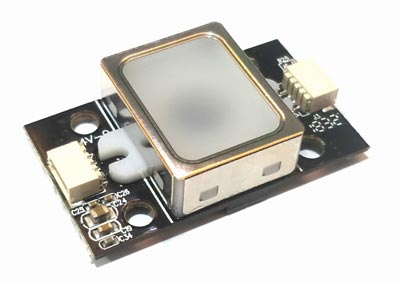
There are several uses of these devices, but the most common one that you can find is mobile devices. Now-a-days mobile phones are coming with Face IDs that scans your face to unlock, there are finger –print scanners that scan the prints of your fingerprint. One more common uses are in the ATMs, modern ATMs are coming with extra security features by adding the method of biometrics in them in order to vend the money out. They are also being used in various offices for attendance purpose, they are being used in banks too for unlocking the lockers.
There are finger-print sensors available in the market for hobbyists like you and me, that we can purchase and use for making our own projects with them. You can make a door lock with that, you can make an attendance device using that, you can even make an automobile lock and many more projects are there. What just needed is to widen your imagination ;).
10. Voice Recognition Sensors
In the last but not the least section we have VOICE RECOGNITION SENSORS and as the name implies it can recognize the human voice and can output the recognized voice in a character form or any other form that we can compare to make the microcontroller do whatever we want it to and if you are getting confused that it can also differentiate one individuals voice with the another, then you are not correct it can recognize voice and with that I mean that it can recognize what words you have uttered. It can be used for smaller projects like “Turn on the bulb please” or much bigger projects like “please start my daily routine for the morning”.
Conclusion
So, IoT is a thing that we can use for many different purposes and for everything new you can get a sensor and if you aren’t that much lucky to get one for your purpose then there’s always a way to modify one that is lying previously or to create one sensor of your own J. In contrast with the rapidly developing world in which all are getting busier and busier it will be very common to see IoT coming into play with different sensors used. So tighten your seatbelts from now onwards and keep taking knowledge about the futuristic gadgets, sensors and the most important IoT.






